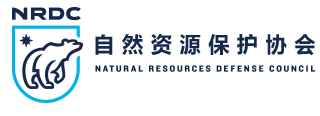2012年6月,135多位国家首脑、商业领袖及地方政府和民间团体代表将在巴西里约热内卢共同出席里约+20地球峰会。此次会议的成果直接关系到中国的切实利益。1992年的地球峰会和《21世纪议程》使得可持续发展的概念在中国成为一项国家政策指导方针,并且中国领导人明确表示向环境可持续的低碳经济转变,对于中国的未来发展至关重要。
中国在过去二十年中的快速发展使得十几亿中国人民的生活水平有了显著提高,但同时也使得国民和环境的健康为此付出了惨重代价。消除非可持续发展带来的负面影响需要持续的国际合作,并已在很大程度上促进了技术的发展以及有助于全球可持续发展的最佳实践。中国即将进入有史以来最具雄心的五年计划的第一年,里约+20峰会恰逢此时召开,这是强调可持续发展目标的长期性、艰巨性和展示并放大所取得成效的绝佳机会。
中国的“十二五”规划(2011-2015)中,已经有一整套的气候变化应对和清洁能源发展目标,我们据此编制了一系列针对这些当务之急的政策落实举措,和进一步鼓励可持续发展所必须的激励机制。我们在本届地球峰会上,重点关注国家、企业和公众是否能采取具体而有意义的,有可量化目标和变革性影响的实际行动[1]。我们相信中国可以通过承诺实施以下措施来为里约+20峰会的成功做出举足轻重的贡献。
落实行动来实现甚至超额完成中国的气候和能源的“十二五”计划目标
• 为电网公司和当地政府设定可再生能源配额
中国已经制定了在2020年之前将非化石燃料的能源消耗比重增加到占一次性能源消耗15%的目标。在2015年之前,中国计划将风能和太阳能的规划部署分别增加70吉瓦和10吉瓦。风能和太阳能光伏的上网电价以及省政府补贴对于持续完成这些目标仍然非常重要。
确保中国可再生能源比重持续增长的另一项重要措施,是为电网公司和当地政府设置可再生能源配额。这些将有助于确保全国可再生能源目标的实现和低碳能源广泛、合理的布局。在国家修订可再生能源法的过程中,也有这样的呼声[2]。
• 加强可再生能源和电网的一体化
中国发展可再生能源产业的宏伟蓝图在上一个五年计划(“十一五”)期间吸引了4000亿美元的投资,同时降低了对于煤炭的依赖性并提高了能源自主性。虽然中国的风电装机容量和总体可再生能源生产能力处于世界领先地位,电网基础设施和整合的不足导致了一些可再生能源的利用率低下。中国应该改善对可再生能源整合的规划,为风能和太阳能建立可行的电网并联标准,并发展能源储存和天然气调峰电厂以便于提高可再生能源并网比例。
• 提高城市合理分布的可再生能源部署的融资机制和政策
到2015年,中国计划建立15吉瓦的太阳能光伏发电能力,包括大型太阳能基地。除发展这些工程规模的应用设施,中国还应该加倍努力发展布局合理的城市屋顶太阳能光伏设施,应制定合理的激励机制并鼓励对创新性融资模式的推广。中国也应该实施一项更为积极的全国性项目,在城市和农村地区,推广安装屋顶太阳能热水器。
• 改进电网公司节能绩效的测量和目标实施情况验证
2011年1月1日生效的全国《电力需求侧管理(DSM)办法》要求中国电网公司实现年度节能目标——在前一年销售电量和尖峰负荷的基础上降低3%。为了成功推行该管理办法,必须实施透明有效的测量和验证措施,来评估电网公司在提高能效方面的努力成效如何。一旦节能量在全国范围内认证的机制下被验证了,它将为中国设计下一个激励电网公司超额完成规定目标的政策机制铺平道路。
• 逐步淘汰高污染柴油燃料在车辆中的使用
中国是世界上最大的汽车市场。在过去十年中,汽车保有量的增长已使得城市空气质量持续下滑。中国已经制定了一项从2011年到2015年在全国范围内将二氧化硫污染降低8%的目标。然而,尽管汽车能效方面取得了巨大成效,中国的道路上仍然行驶着释放大量二氧化硫的柴油车,而二氧化硫正是导致酸雨的罪魁祸首。由于清洁燃料的供给不足,新的汽车排放标准已经被推迟。
中国的柴油问题可以按参考其他国家的经验进行处理,首先集中于生产更清洁的柴油燃料。通过实施更严格的标准,降低柴油燃料中硫含量,并配合一定的激励机制,中国可以遏制柴油车辆的增加对于环境和健康的影响。
[1]参见自然资源保护协会(NRDC)向里约+20峰会的正式提交文件,可点击此处
[2]参见自然资源保护协会(NRDC)对改善和实施中国可再生能源法的全部建议,可点击此处


